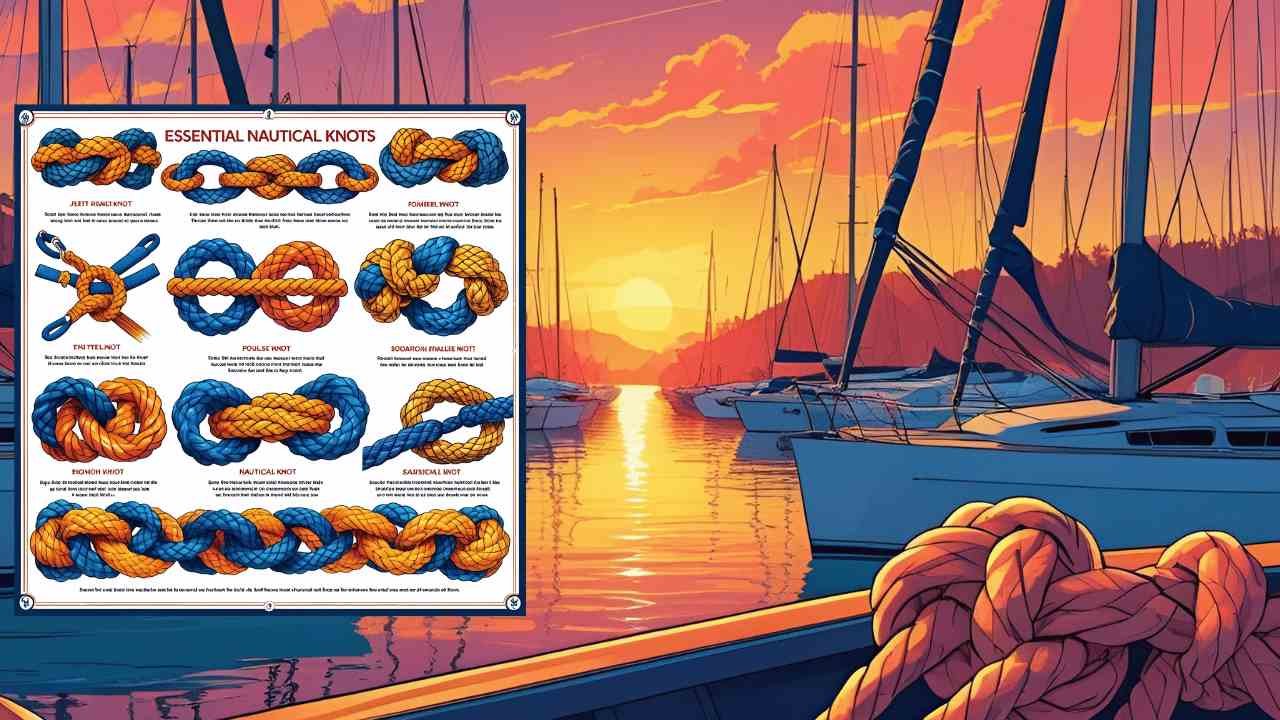Essential Nautical Knots Every Boater Needs to Know
Whether you’re an experienced sailor or just learning how to steer a boat, knowing a few essential nautical knots can make your boating journey smoother—and safer. Think of them like your onboard toolbox. With the right knots, you can tie up at the dock, tow another vessel, or keep your equipment secure in minutes. So, if you’re asking yourself, “Which boating knots should I know?”—you’re in the right place.
In this guide, we’ll walk you through the must-know knots that every boater, kayaker, or weekend lake cruiser should keep in their back pocket. Plus, we’ll share some easy tricks to remember them, so you’re not left all tangled up when you need them most.
Why Are Essential Nautical Knots So Important?
Before we dive into individual knots, let’s first talk about why they matter.
When you’re out on the water, conditions can change in a blink—wind, waves, strong currents. A good knot isn’t just about convenience; it’s about safety. A reliable boating knot:
- Secures your boat to a dock or mooring
- Keeps lines from slipping under tension
- Makes towing or anchoring easier
- Prevents accidents or damage to your boat
So while they might seem basic, these knots are lifesavers—literally.
Top Essential Nautical Knots Knots Every Boater Should Learn
You don’t need to memorize hundreds of knots. Just mastering a handful can get you through most situations. Here are the most essential boating knots to learn:
1. The Bowline – “The King of Knots”
The Bowline is one of the most famous and widely used boating knots. It forms a fixed loop at the end of a line that won’t slip or jam under tension—but it still unties easily when you’re done.
Best for: Creating a loop to go around a post or cleat, or for rescue situations.
Why boaters love it: It’s strong, secure, and reliable. A seasoned sailor might tell you, “If you only know one knot, make it the Bowline.”
Pro Tip: Think of a story to memorize it: “The rabbit comes out of the hole, goes around the tree, and back into the hole.”
2. The Cleat Hitch – Perfect for Docking
If you’re tying off to a cleat at the dock, this is your go-to knot. It’s simple, secure, and great for keeping your boat in place.
Best for: Tying your boat to a dock using a cleat.
Why it’s essential: When properly tied, a cleat hitch holds steady—even in rough weather—but can be released in seconds.
Quick tip: Make sure you finish with a final “locking turn” to keep the line from slipping off.
3. The Clove Hitch – Quick and Adjustable
Need to tie off your bumper fenders or secure something temporarily? The Clove Hitch is fast and simple—but it’s not always the most secure over time.
Best for: Temporary attachment to a rail or piling.
Good to know: It can work loose if there’s too much motion or tension over time. So double check or back it up with a half hitch if needed.
4. The Figure Eight Knot – Your Line Stopper
This knot prevents your rope from slipping completely through another piece of gear or hardware.
Best for: Preventing lines from disappearing into pulleys, winches, or hands when under load.
Easy visual: It looks just like the number 8—hence the name.
Simple and effective: One of the easiest knots to tie and a good one for kids to learn too.
5. The Essential Nautical Square Knot – Simple but Handy
Also known as the “Reef Knot,” this one is great for tying two lines of the same thickness together—say, when you need just a little more length.
Best for: Joining two ropes for non-critical uses.
Avoid using when: Loads are heavy or safety is at stake—it can slip under pressure.
Fun way to remember: “Right over left, then left over right.”
6. The Anchor Bend – Securing to Your Anchor
If you’re anchoring your boat, this knot is ideal for tying your line to the anchor ring.
Best for: Attaching a rope to a ring or anchor shank.
Bonus: Even though it’s called a “bend,” it’s technically a hitch.
Why it works: It resists jamming and is less likely to come loose in the water’s pull.
How to Practice These Essential Nautical Knots
Reading about knots is a good start, but like anything hands-on, practice makes perfect. The best way to learn is to grab a short piece of rope and try them out. Do it while watching TV, or before your next trip out—muscle memory is your friend.
Here are a few practice tips:
- Use soft rope: It’s easier to manipulate and won’t hurt your hands.
- Start slow: Go through each step one at a time before trying for speed.
- Repeat regularly: Just 5 mins a day can help you master them before your next adventure.
Choosing the Right Knot for the Job
Just like using the right tool for a repair, different boating situations call for specific knots. Don’t tie your kayak down to your roof with a slippery knot. Don’t attempt to hang fenders with something that’ll loosen halfway through your ride.
Think about:
- What you’re tying off to (post, anchor, dock cleat)
- How much strain or movement will be on the line
- Whether the knot needs to come apart quickly or stay firm for hours
Understanding how and when to use the right knot could be the difference between an easy day on the water—or a boat drifting away.
Make Essential Nautical Knots Part of Your Boating Toolkit
Some people have GPS, radios, even fish finders onboard—but a well-tied knot? You can always count on that.
Practicing a core group of boating knots isn’t just for captains or old-school sailors. Every boater should know a few of these to handle everyday situations quickly and safely. So next time you’re heading out, take a minute to tie a Bowline or a Cleat Hitch. It’s not just a knot—it’s peace of mind.
And who knows? Once you’ve learned the essentials, maybe you’ll find yourself enjoying the challenge of learning even more. Because once those ropes are in your hands, you’re officially part of an age-old tradition—one that ties all boaters together.
Happy boating—and happy knot-tying!
Don’t forget: Practicing these essential boating knots on dry land now could save you a ton of trouble once you’re out on the water.
Want more tips like this?
Subscribe to our blog for quick how-to guides, boating safety advice, and expert tips to make every outing a breeze. From tying the perfect knot to choosing the best life jacket—we’ve got you covered.







